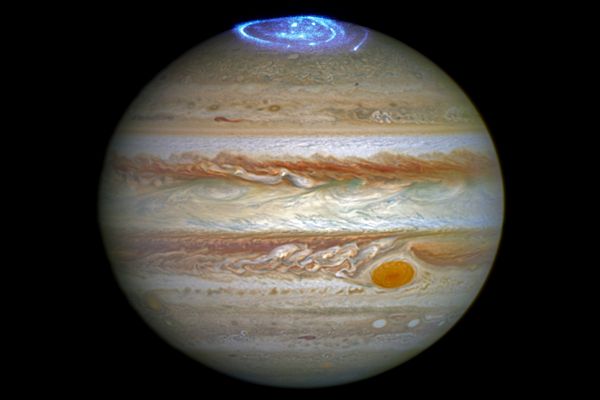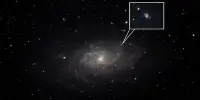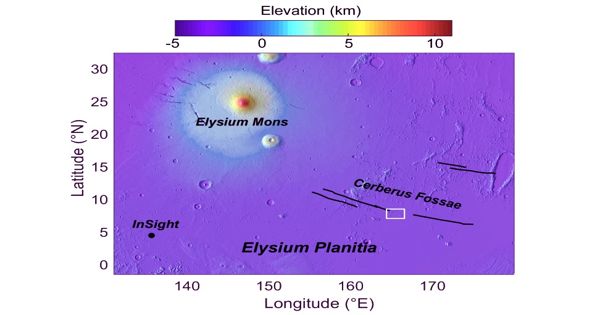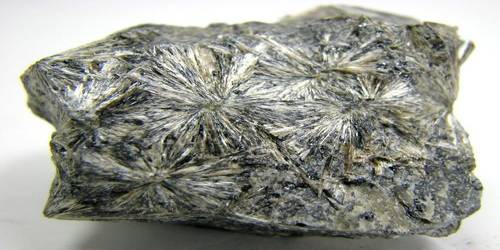Astronomers have discovered new faint aurora features, which are distinguished by ring-like emissions that expand rapidly over time. These auroral emissions were caused by charged particles emitted from the edge of Jupiter’s massive magnetosphere, according to scientists.
The SwRI-led Ultraviolet Spectrograph (UVS) on NASA’s Juno spacecraft orbiting Jupiter has detected new faint aurora features, which are characterized by ring-like emissions that expand rapidly over time. SwRI scientists discovered that charged particles emitted from the edge of Jupiter’s massive magnetosphere were responsible for the auroral emissions.
“We believe these newly discovered faint ultraviolet features originate millions of miles away from Jupiter, near the boundary of the Jovian magnetosphere with the solar wind,” said Dr. Vincent Hue, lead author of a paper accepted for publication in the Journal of Geophysical Research: Space Physics. “The solar wind is a supersonic stream of charged particles that the Sun emits. When they reach Jupiter, they interact with its magnetosphere in ways that are still unknown.”
NASA’s Juno mission has detected new auroral emissions on Jupiter which appear to ripple over the planet’s poles. The SwRI-led Ultraviolet Spectrograph (UVS) orbiting Jupiter aboard NASA’s Juno spacecraft has detected new faint aurora features, characterized by ring-like emissions, which expand rapidly over time.
Jupiter’s bright persistent polar aurora and Earth’s dark polar region show that the magnetospheric topologies of the planets are very different. According to high-resolution global simulations, the reconnection rate at the interface between the interplanetary and jovian magnetic fields is too slow to generate a magnetically open, Earth-like polar cap on the time scale of planetary rotation, resulting in only a small crescent-shaped region of magnetic flux interconnected with the interplanetary magnetic field.
Jupiter and Earth both have magnetic fields that shield them from the solar wind. The magnetosphere expands with the strength of the magnetic field. Jupiter’s magnetic field is 20,000 times stronger than Earth’s, resulting in a magnetosphere so massive that it begins to deflect solar wind 2-4 million miles before it reaches Jupiter.
“Despite decades of observations from Earth and numerous in-situ spacecraft measurements, scientists still do not fully understand the role of the solar wind in moderating Jupiter’s auroral emissions,” said SwRI co-author Dr. Thomas Greathouse. “Jupiter’s magnetospheric dynamics, the motion of charged particles within its magnetosphere, is largely controlled by Jupiter’s 10-hour rotation, the fastest in the solar system. The solar wind’s role is still debated.”

The majority of the Jovian polar cap is threaded by helical magnetic flux, which closes within the planetary interior, extends into the outer magnetosphere, and piles up near the downside flank, where fast differential plasma rotation pulls the field lines sunward. This novel magnetic topology sheds new light on Jupiter’s distinct auroral morphology.
One of the goals of the Juno mission, which was recently extended by NASA until 2025, is to investigate Jupiter’s magnetosphere by measuring its auroras with the UVS instrument. Previous observations with the Hubble Space Telescope and Juno have revealed that the majority of Jupiter’s powerful auroras are caused by internal processes, specifically the motion of charged particles within the magnetosphere. However, UVS has detected a faint type of aurora on numerous occasions, characterized by rings of emissions that expand rapidly with time.
“The high-latitude location of the rings suggests that the particles causing the emissions are coming from the distant Jovian magnetosphere, near its boundary with the solar wind,” said Bertrand Bonfond, a co-author on this study from Liège University in Belgium. Plasma from the solar wind frequently interacts with Jovian plasma in this region, resulting in “Kelvin-Helmholtz” instabilities. These phenomena occur when shear velocities exist, such as at the interface of two fluids moving at different rates. Another potential candidate to produce the rings are dayside magnetic reconnection events, where oppositely directed Jovian and interplanetary magnetic fields converge, rearrange and reconnect.
Both of these processes are thought to produce particle beams that could travel along the Jovian magnetic field lines, eventually precipitating and triggering Jupiter’s ring auroras. “While this study does not conclude what processes produce these features,” Hue said, “the Juno extended mission will allow us to capture and study more of these faint transient events.”
As a result, the researchers argue that more research is needed to fully understand the processes that result in these newly discovered ring-like emissions. The researchers hope to study Jupiter’s auroral features in greater depth now that NASA’s Juno mission has been extended until 2025.
















